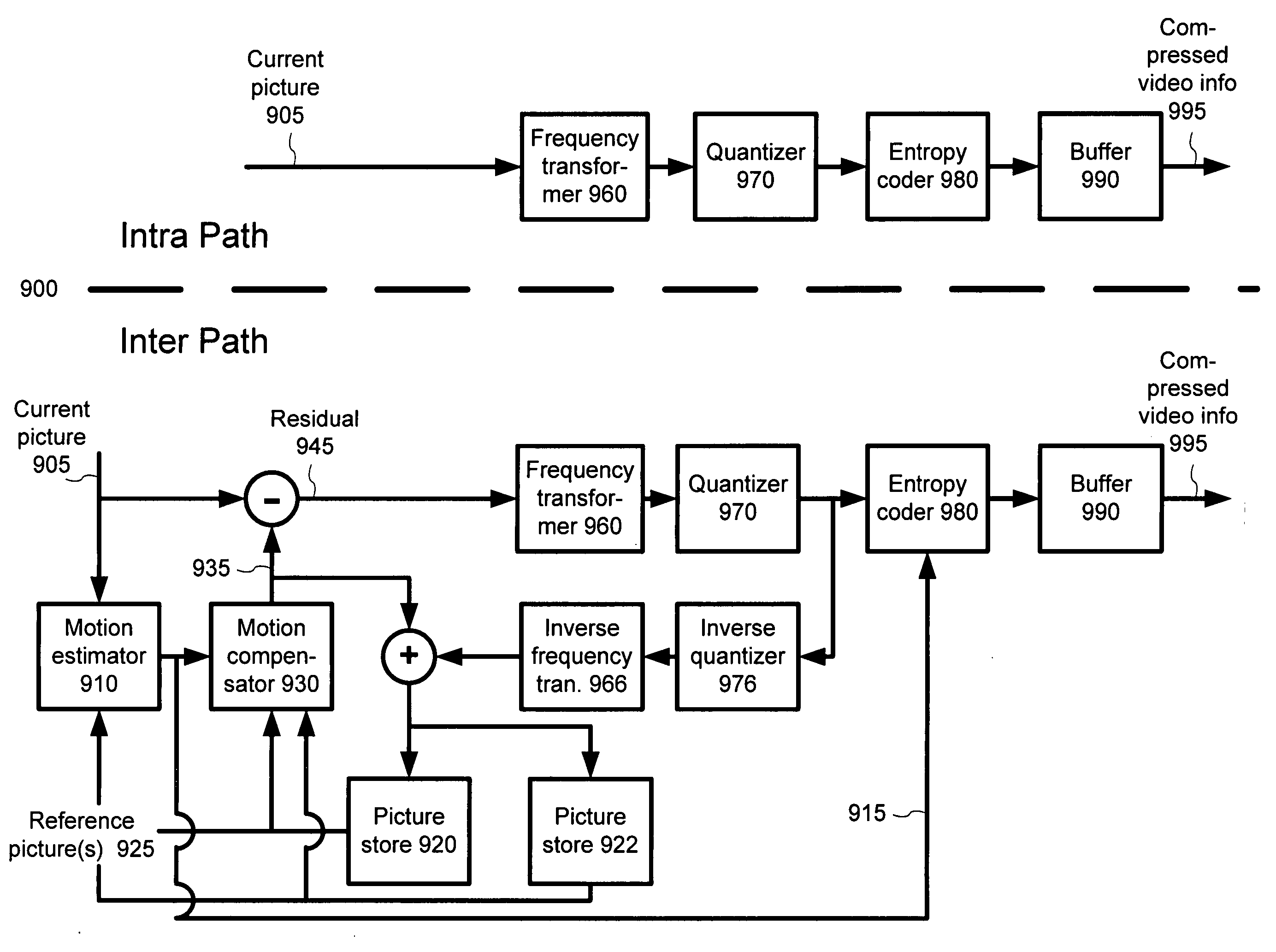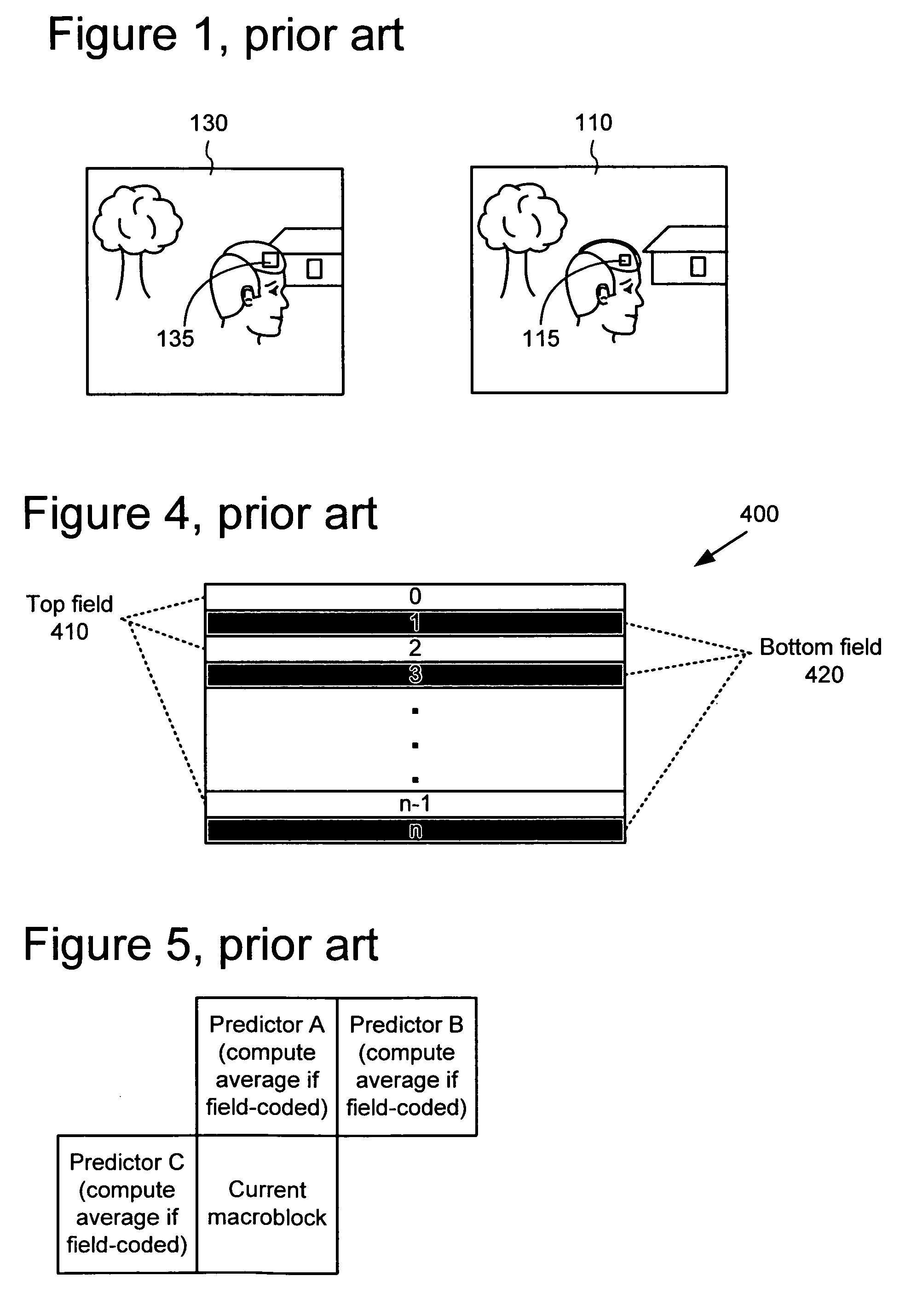Predicting motion vectors for fields of forward-predicted interlaced video frames
a technology of motion vectors and video frames, applied in the field of predicting motion vectors for forward-predicted interlaced video frames, can solve the problems of large amount of digital video storage and transmission capacity, lossless compression, and many computers and computer networks lack the resources to process raw digital video, so as to improve the accuracy of motion vector prediction and reduce the bitrate associated
- Summary
- Abstract
- Description
- Claims
- Application Information
AI Technical Summary
Benefits of technology
Problems solved by technology
Method used
Image
Examples
Embodiment Construction
The present application relates to techniques and tools for efficient compression and decompression of interlaced video. In various described embodiments, for example, a video encoder and decoder incorporate techniques for predicting motion vectors in encoding and decoding predicted fields in interlaced video frames, as well as signaling techniques for use with a bit stream format or syntax comprising different layers or levels (e.g., sequence level, picture / image level, field level, macroblock level, and / or block level). The techniques and tools can be used, for example, in digital video broadcasting systems (e.g., cable, satellite, DSL, etc.).
In particular, described techniques and tools improve the quality of motion vector predictors for blocks and / or macroblocks of forward-predicted fields of interlaced video frames, which in turn allows motion vectors to be more efficiently encoded. For example, techniques are described for generating predictor motion vectors for the blocks ...
PUM
 Login to View More
Login to View More Abstract
Description
Claims
Application Information
 Login to View More
Login to View More - R&D
- Intellectual Property
- Life Sciences
- Materials
- Tech Scout
- Unparalleled Data Quality
- Higher Quality Content
- 60% Fewer Hallucinations
Browse by: Latest US Patents, China's latest patents, Technical Efficacy Thesaurus, Application Domain, Technology Topic, Popular Technical Reports.
© 2025 PatSnap. All rights reserved.Legal|Privacy policy|Modern Slavery Act Transparency Statement|Sitemap|About US| Contact US: help@patsnap.com



